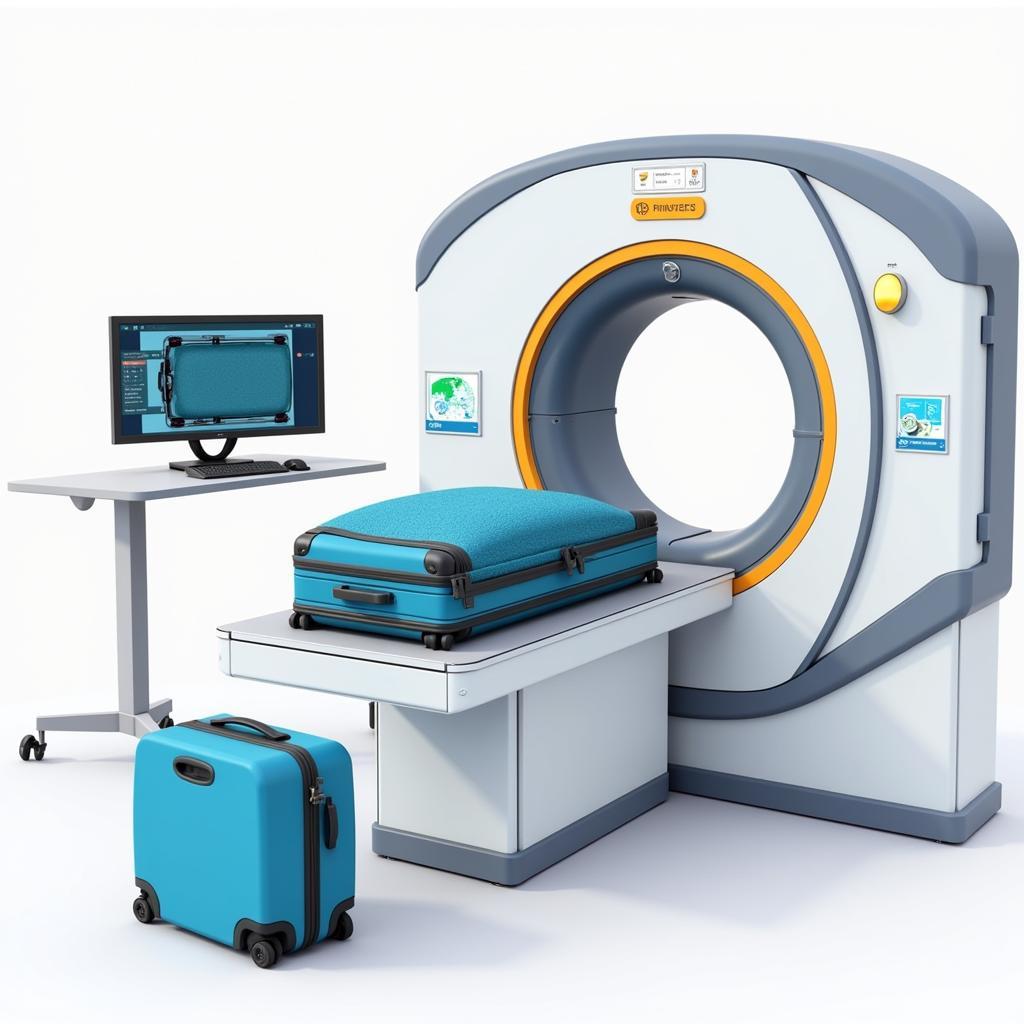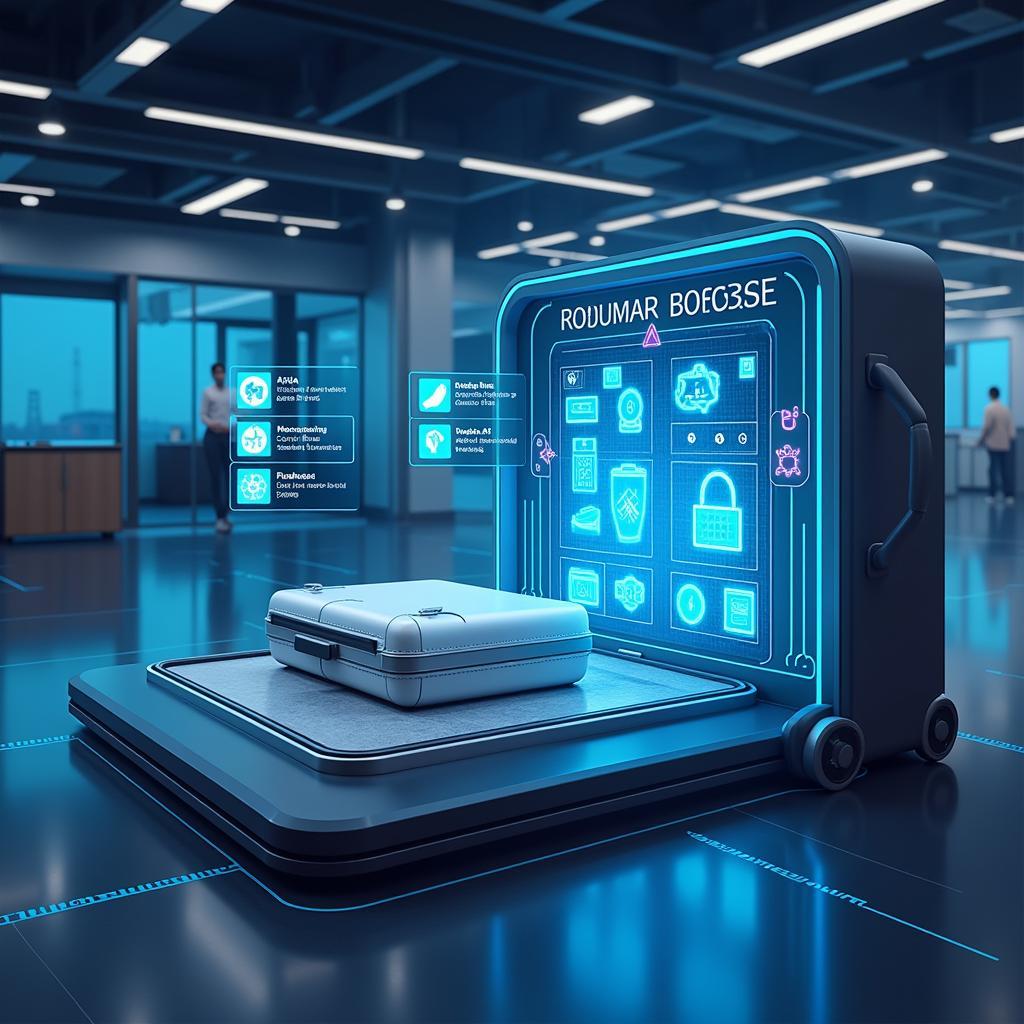Airport Baggage Scanners are an essential component of modern air travel, playing a crucial role in maintaining security and facilitating the smooth flow of passengers and luggage. These sophisticated devices use advanced technology to inspect checked and carry-on baggage for prohibited items, ensuring the safety of everyone onboard.
Understanding Airport Baggage Scanner Technology
Airport baggage scanners utilize various technologies to examine the contents of bags without the need for manual inspection. The most common types include X-ray scanners and Computed Tomography (CT) scanners. X-ray scanners create two-dimensional images of the bag’s contents, allowing security personnel to identify potential threats. More advanced CT scanners produce detailed three-dimensional images, providing a clearer view and enhancing the detection capabilities. These systems are constantly evolving, incorporating new algorithms and software to improve accuracy and efficiency. The goal is to minimize false alarms while maximizing the detection of potentially dangerous items.
Different Types of Airport Baggage Scanners
There are several types of airport baggage scanners, each designed for specific purposes and levels of security screening. Traditional X-ray scanners are widely used for initial screening, while CT scanners are increasingly deployed for more thorough inspections. Explosives detection systems (EDS) are specifically designed to detect traces of explosives, and are often used in conjunction with X-ray or CT scanners. These diverse technologies contribute to a layered security approach, ensuring that all baggage is thoroughly checked.
What sets these scanners apart? Primarily, it’s their ability to penetrate different materials and provide varying levels of image detail. For instance, while a standard X-ray machine might struggle to differentiate between a block of cheese and a plastic explosive, a CT scanner can clearly distinguish the two. This capability is crucial for accurate threat detection.
 CT Scanner Airport Baggage Screening 3D Image
CT Scanner Airport Baggage Screening 3D Image
Similar to [bags on belt meaning airport], the process of baggage handling involves a complex network of systems working together. These range from the initial check-in point to the final baggage claim area, all designed to ensure the safe and efficient transfer of luggage.
The Role of Airport Baggage Scanners in Security
Airport baggage scanners are the frontline defense against potential threats in air travel. They prevent weapons, explosives, and other prohibited items from being brought onto aircraft. By meticulously screening all checked and carry-on baggage, these scanners significantly enhance aviation security. Trained security personnel analyze the images produced by the scanners, identifying potential threats and taking appropriate action. This process is crucial in maintaining a safe and secure environment for all passengers and crew.
The advancements in [airport baggage scanner] technology are directly related to the evolving nature of threats. As security measures improve, so too do the methods employed by those who seek to circumvent them. This constant back-and-forth drives the need for continuous innovation and improvement in security technologies.
The Future of Airport Baggage Screening
The future of airport baggage screening is likely to involve even more advanced technologies, such as Artificial Intelligence (AI) and machine learning. AI-powered scanners can automatically detect suspicious items with greater accuracy and speed, reducing the workload on security personnel and minimizing delays. Further advancements are also expected in the development of non-invasive screening methods, enhancing passenger privacy while maintaining high levels of security.
Just as [3d airport baggage claim] is becoming more common, the integration of advanced technologies like AI is transforming the overall passenger experience. These advancements aim to streamline the process, minimize wait times, and reduce the stress associated with air travel.
 Future Airport Baggage Scanner AI-Powered
Future Airport Baggage Scanner AI-Powered
Like with [abudhabi airport security], implementing cutting-edge technology is paramount for maintaining high security standards. This proactive approach is crucial in ensuring passenger safety and maintaining confidence in air travel.
Conclusion
Airport baggage scanners are an indispensable part of modern air travel. These sophisticated devices provide a critical layer of security, protecting passengers and crew from potential threats. Through continuous technological advancements, airport baggage scanners are becoming increasingly effective and efficient, ensuring the smooth and safe flow of air travel. Understanding how these systems work helps travelers appreciate the vital role they play in keeping our skies safe. For any questions regarding airport security procedures, feel free to contact us.
FAQs
- What can I not bring in my carry-on bag? Items such as sharp objects, liquids exceeding 3.4 ounces, and flammable materials are generally prohibited in carry-on baggage.
- How does the TSA PreCheck program affect baggage screening? TSA PreCheck members often enjoy expedited screening, including leaving laptops and liquids in their bags.
- What happens if a prohibited item is found in my bag? Security personnel will confiscate the item and may subject the bag to further inspection.
- Can I bring medications in my carry-on bag? Yes, medications are generally permitted in carry-on baggage, but it’s advisable to carry them in their original packaging.
- Are there any size or weight restrictions for carry-on baggage? Yes, airlines typically have specific size and weight restrictions for carry-on baggage, which vary by airline.
- What should I do if my checked bag is lost? Report the lost bag to the airline immediately. They will initiate a tracing process to locate your bag.
- How are liquids screened in checked baggage? Checked baggage is screened using X-ray and/or CT scanners to detect prohibited liquids.
Have other questions related to [airport checking xxx] or [16 mva power transformer leading and position at airport chennai]? Visit our website for more information.
Need assistance? Contact us at Phone Number: +13089626264, Email: [email protected], or visit us at 404 Bothwell St, Oxford, NE 68967, USA. We offer 24/7 customer support.

